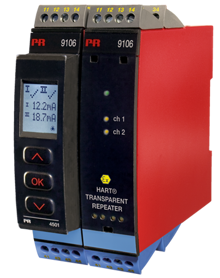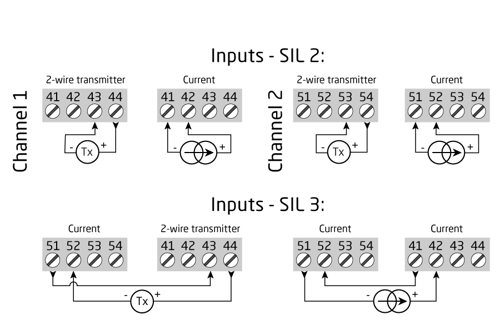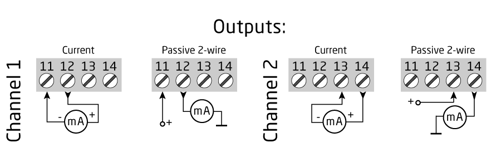Product Spotlight: The PR electronics 9106B HART transparent repeater
Get an introduction to HART and the PR 9106B and what it can do for you.

a) What is “HART”?
- The HART protocol is a low speed, digital communications scheme that is carried on a 4…20 mA current signal. Since 4…20 mA loops are commonly used in industry, the HART protocol is easy to implement, easy to use, and fairly easy to troubleshoot. 4…20 mA devices that communicate via HART are popular in many industries, including the chemical and petrochemical industries.
b) What does “HART transparent” mean?
- The 9106B HART transparent repeater can safely excite and measure standard or HART-enabled transmitters, located in zone 0 / Division 1 hazardous locations. The 9106B is HART transparent, so digital messages between a HART field transmitter in the hazardous area a HART master located in the safe area will pass through the PR 9106B without any problems.
c) Why use the PR 9106B?
- When connected to a certified field transmitter, the PR 9106B can provide an “intrinsically safe” measurement of the transmitter’s 4…20 mA signal and HART protocol. Thus, a HART master located in the safe area can now safely measure the field transmitter without risk of an explosion in the hazardous area. The PR 9106B is a barrier which allows standard devices –like a HART master, to safely measure field transmitters located a hazardous area.
d) Can the PR 9106B be used with standard, (non-HART), current transmitters?
- Yes, the PR 9106B can be used with HART or standard, (non-HART), 4...20 mA current transmitters.
e) Can the two channel PR 9106B measure one field transmitter and output two isolated HART transparent 4…20 mA signals?
- Yes.
f) Can the PR 9106B measure active or passive current signals?
- Yes.
g) Can the PR 9106B can output active or passive current signals?
- Yes.
h) What is the difference between active and passive current signals?
- A voltage source must be present in order to create a current flow. A device that creates an “active” current signal contains the voltage source within the device. A device that creates a “passive” current signal does not have its own voltage source. Thus, no current flow will occur until an external voltage source is connected to the device signal wiring. Some devices create or require an active current signal, and other devices create or require a passive current signal. The PR 9106B input and output works with either active or passive current, making it usable with all 4…20 mA devices on the market.
i) Wiring the PR 9106B to measure an active or passive input signal.

j) Wiring the PR 9106B to create an active or passive output signal.


